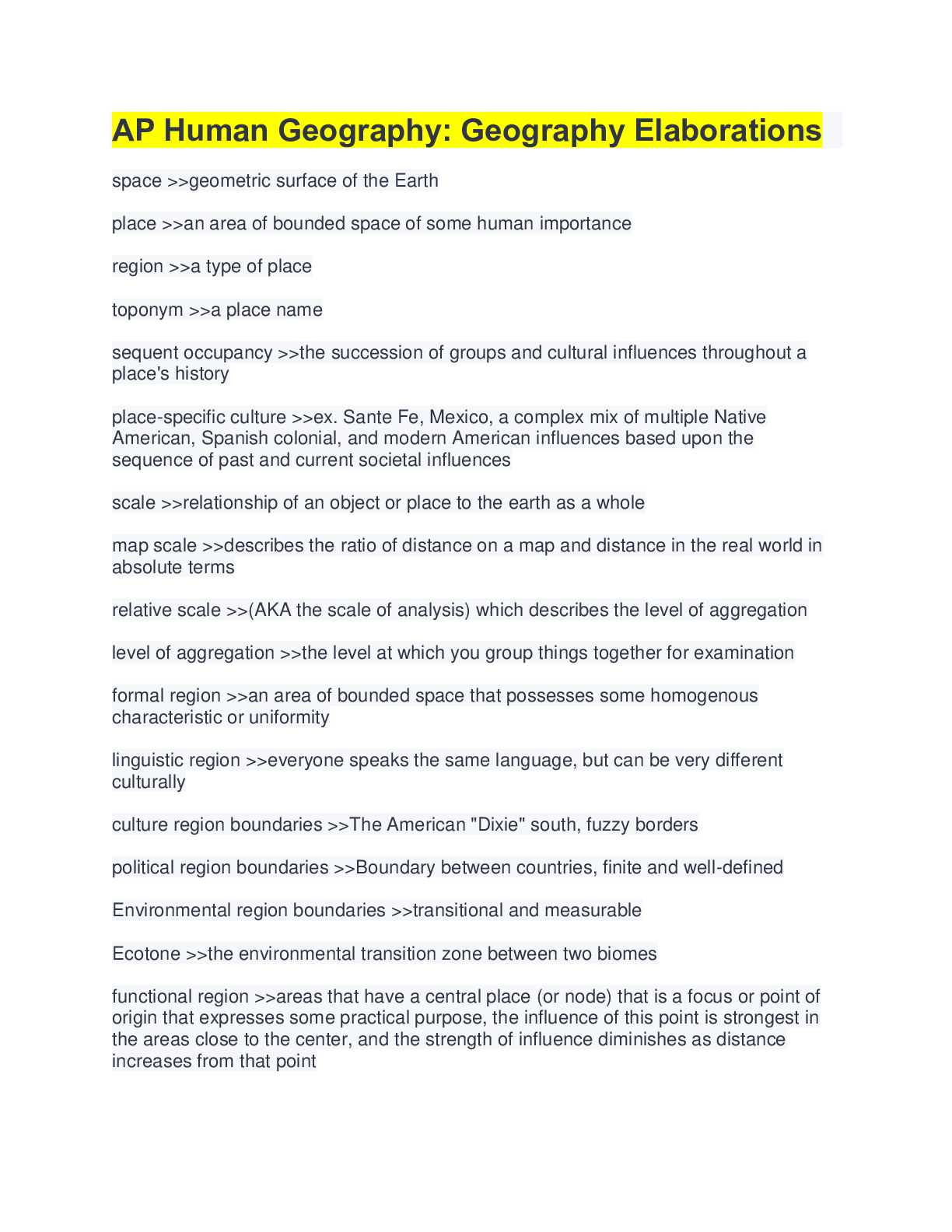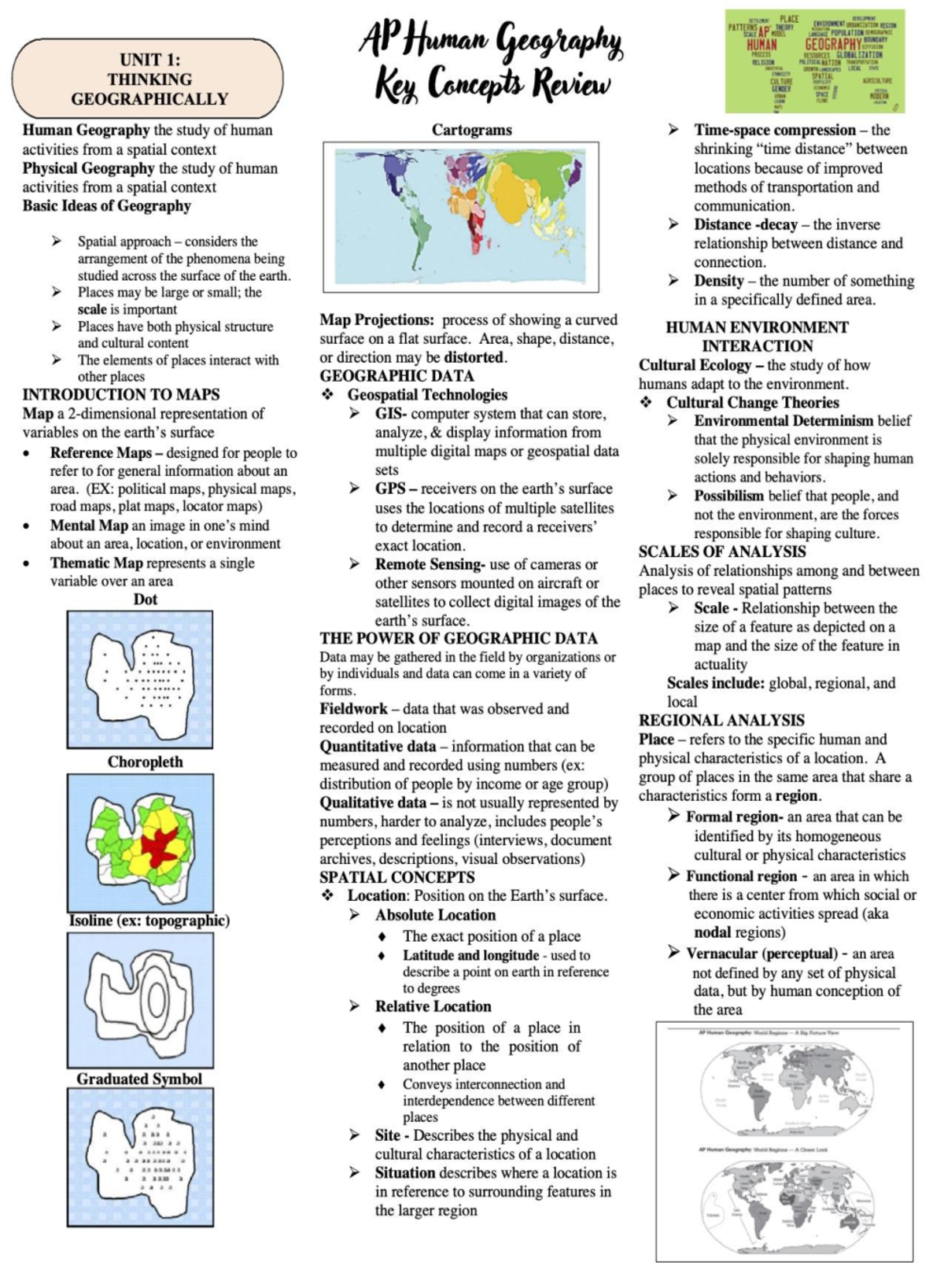What Is Comparative Advantage In AP Human Geography: Your Ultimate Guide
Alright, let's dive into something that might sound complex at first but is actually pretty straightforward once you break it down. What is comparative advantage in AP Human Geography? It's one of those terms that might seem intimidating, but trust me, it's just a fancy way of explaining why countries focus on producing certain goods and services over others. Comparative advantage is a key concept in understanding global trade patterns, and if you're taking AP Human Geography, this is one topic you definitely don't want to miss.
So, why should you care about comparative advantage? Well, it plays a huge role in shaping the global economy. Think about it – every country has its strengths and weaknesses when it comes to producing goods and services. Comparative advantage helps us figure out which products each country should focus on to maximize efficiency and minimize costs. This concept isn't just theoretical; it has real-world implications that affect everything from the price of your morning coffee to the availability of rare materials.
Let’s face it, the world is more interconnected than ever. Understanding how countries interact economically is crucial, and comparative advantage is the backbone of this interaction. In this article, we’ll break it down for you step by step, so even if you’re new to the topic, you’ll walk away with a solid understanding of what it means and why it matters. Ready to learn? Let’s go!
Before we jump into the nitty-gritty details, here's a quick table of contents to help you navigate through the article:
- What is Comparative Advantage?
- Difference Between Absolute and Comparative Advantage
- How Comparative Advantage Works
- Real-World Examples of Comparative Advantage
- Importance in AP Human Geography
- Benefits of Comparative Advantage
- Limitations and Criticisms
- Comparative Advantage and Global Trade
- How to Apply This Concept in Real Life
- Conclusion
What is Comparative Advantage?
Alright, let's start with the basics. Comparative advantage is an economic theory that explains why countries specialize in producing certain goods and services. It’s all about opportunity cost – the idea that a country should focus on producing goods where it can produce them at the lowest cost relative to other goods. In simple terms, it means countries should do what they’re best at and trade for the rest.
For example, imagine two countries: Country A and Country B. Country A can produce both wheat and coffee, but it’s way better at producing wheat. Country B, on the other hand, is great at producing coffee but not so much at wheat. Instead of both countries trying to produce both goods, they can specialize – Country A focuses on wheat, and Country B focuses on coffee. Then, they trade with each other, and everyone wins!
Comparative advantage isn’t just about who’s better at producing something; it’s about who can produce it most efficiently relative to other goods. This is why it’s such a powerful concept in economics and AP Human Geography.
Difference Between Absolute and Comparative Advantage
Now, let’s clear up a common confusion. People often mix up absolute advantage and comparative advantage, but they’re not the same thing. Absolute advantage is about who can produce more of a good or service with the same amount of resources. For example, if Country A can produce 100 tons of wheat while Country B can only produce 50 tons, Country A has the absolute advantage in wheat production.
But here’s the kicker: having an absolute advantage doesn’t necessarily mean a country should produce that good. That’s where comparative advantage comes in. Comparative advantage looks at opportunity cost – the value of what you give up to produce something else. Even if Country A is better at producing both wheat and coffee, it might still be more efficient for them to focus on wheat and trade for coffee.
Key Differences
- Absolute advantage is about being the best at producing something.
- Comparative advantage is about being the most efficient relative to other goods.
- Absolute advantage focuses on quantity, while comparative advantage focuses on efficiency.
How Comparative Advantage Works
Let’s break down how comparative advantage works in practice. Imagine two friends, Alex and Jamie, who are trying to decide how to split up tasks for a project. Alex is great at writing but not so good at designing graphics. Jamie, on the other hand, is a design wizard but struggles with writing. Instead of both trying to do everything, they decide to specialize – Alex writes the content, and Jamie designs the graphics. They then combine their work to create a fantastic project.
This is exactly how comparative advantage works on a global scale. Countries specialize in what they’re best at and trade for the rest. It’s all about maximizing efficiency and minimizing opportunity cost. When countries focus on their comparative advantage, they can produce more goods and services overall, leading to greater economic growth and prosperity.
Real-World Examples of Comparative Advantage
Enough theory – let’s look at some real-world examples of comparative advantage in action. One classic example is the trade relationship between the United States and Mexico. The U.S. has a comparative advantage in producing high-tech goods like computers and electronics, while Mexico has a comparative advantage in producing agricultural products like fruits and vegetables. By specializing in these areas and trading with each other, both countries benefit.
Another example is the trade relationship between Japan and Saudi Arabia. Japan has a comparative advantage in manufacturing cars and electronics, while Saudi Arabia has a comparative advantage in producing oil. Instead of trying to produce oil domestically, Japan focuses on its strengths and imports oil from Saudi Arabia. In return, Saudi Arabia buys Japanese cars and electronics. It’s a win-win situation for both countries.
Importance in AP Human Geography
In AP Human Geography, understanding comparative advantage is crucial because it helps explain global trade patterns and economic development. It’s one of the key concepts that ties together the study of population, culture, politics, and economics. By understanding why countries specialize in certain goods and services, you can better understand the world around you.
For example, comparative advantage helps explain why certain regions are more economically developed than others. Countries that can identify and leverage their comparative advantages tend to experience faster economic growth and higher living standards. On the other hand, countries that struggle to find their niche in the global market may face economic challenges.
Key Takeaways
- Comparative advantage is a core concept in AP Human Geography.
- It helps explain global trade patterns and economic development.
- Countries that focus on their comparative advantages tend to experience greater economic success.
Benefits of Comparative Advantage
So, what are the benefits of comparative advantage? There are several, and they all boil down to one thing: efficiency. When countries focus on their comparative advantages, they can produce more goods and services with the same amount of resources. This leads to several positive outcomes:
- Increased productivity: Countries can produce more goods and services overall.
- Lower prices: Consumers benefit from lower prices due to increased competition and efficiency.
- Greater variety: Trade allows countries to access a wider range of goods and services.
- Economic growth: Specialization and trade lead to faster economic growth and higher living standards.
But here’s the thing: these benefits don’t just happen automatically. Countries need to identify their comparative advantages and create policies that support specialization and trade. This is where AP Human Geography comes in – by studying these concepts, you can understand how to make the global economy work better for everyone.
Limitations and Criticisms
Of course, no economic theory is perfect, and comparative advantage has its limitations. One major criticism is that it assumes free trade without barriers like tariffs or quotas. In reality, trade policies can complicate things and make it harder for countries to fully realize their comparative advantages.
Another limitation is that comparative advantage doesn’t always account for factors like labor conditions, environmental impact, and social inequality. For example, a country might have a comparative advantage in producing cheap goods using low-wage labor, but this could come at the cost of worker exploitation or environmental degradation.
Addressing the Criticisms
- Policy makers need to balance economic efficiency with social and environmental concerns.
- International agreements and regulations can help address some of the negative side effects of trade.
- Education and skill development can help countries move beyond low-value industries and into higher-value sectors.
Comparative Advantage and Global Trade
Comparative advantage is the foundation of global trade. Without it, countries would struggle to determine what to produce and what to trade. By focusing on their comparative advantages, countries can create a more efficient and interconnected global economy. However, global trade is not without its challenges, and understanding comparative advantage is key to addressing these challenges.
For example, comparative advantage can help explain why some countries are more competitive in certain industries than others. It can also help policymakers design trade policies that benefit their countries while minimizing negative impacts on workers and the environment. In short, comparative advantage is a powerful tool for understanding and shaping the global economy.
How to Apply This Concept in Real Life
Now that you understand comparative advantage, how can you apply this concept in your own life? Whether you’re running a business, managing a team, or even just planning a group project, the principles of comparative advantage can help you make better decisions. Here are a few tips:
- Identify your strengths and focus on them.
- Delegate tasks that others can do more efficiently.
- Collaborate with others to maximize efficiency and productivity.
- Stay open to learning and adapting – comparative advantage isn’t static; it can change over time.
By applying these principles, you can create more efficient and effective systems, whether you’re working on a personal project or managing a multinational corporation.
Conclusion
Alright, let’s wrap things up. What is comparative advantage in AP Human Geography? It’s a powerful economic concept that explains why countries specialize in producing certain goods and services. By focusing on their comparative advantages, countries can create a more efficient and interconnected global economy. While it’s not without its limitations, comparative advantage remains one of the most important tools for understanding global trade and economic development.
So, what’s next? If you’re studying AP Human Geography, make sure to dive deeper into this topic and explore how it applies to real-world situations. And if you’re just interested in economics, comparative advantage is a great place to start. Leave a comment below and let me know what you think – and don’t forget to share this article with your friends!



Detail Author:
- Name : Fred Kuhn
- Email : zakary.hills@yahoo.com
- Birthdate : 1996-06-06
- Address : 9125 Oberbrunner Mission Suite 849 South Jerod, CO 30075-2993
- Phone : 1-940-848-6090
- Company : Haag, O'Reilly and Lindgren
- Job : Stonemason
- Bio : Qui ducimus dolorem eum commodi. Porro ducimus iusto accusamus dolores rerum sit quas. Doloremque cum architecto ut et. Provident omnis et ut voluptates tempora corporis rerum.